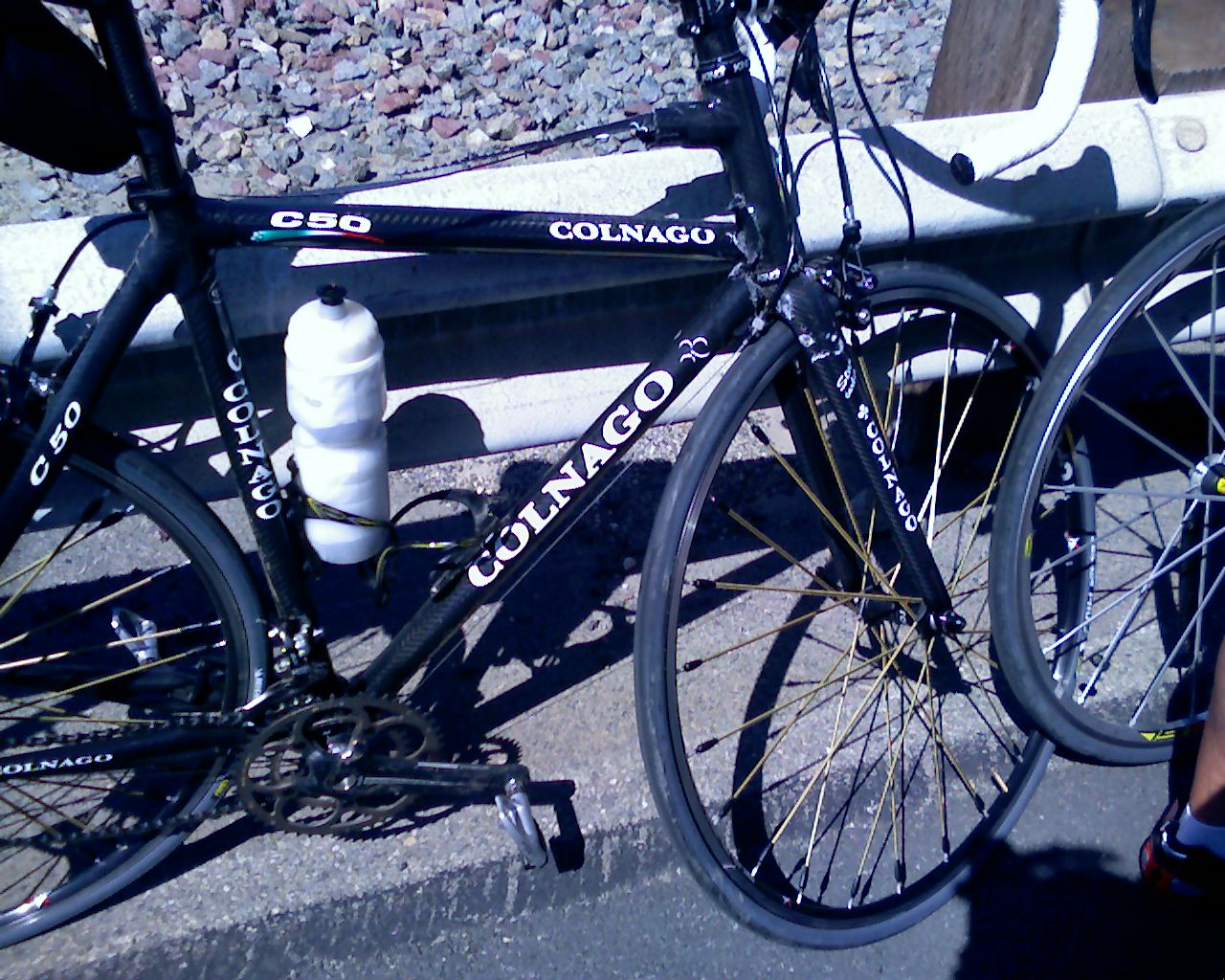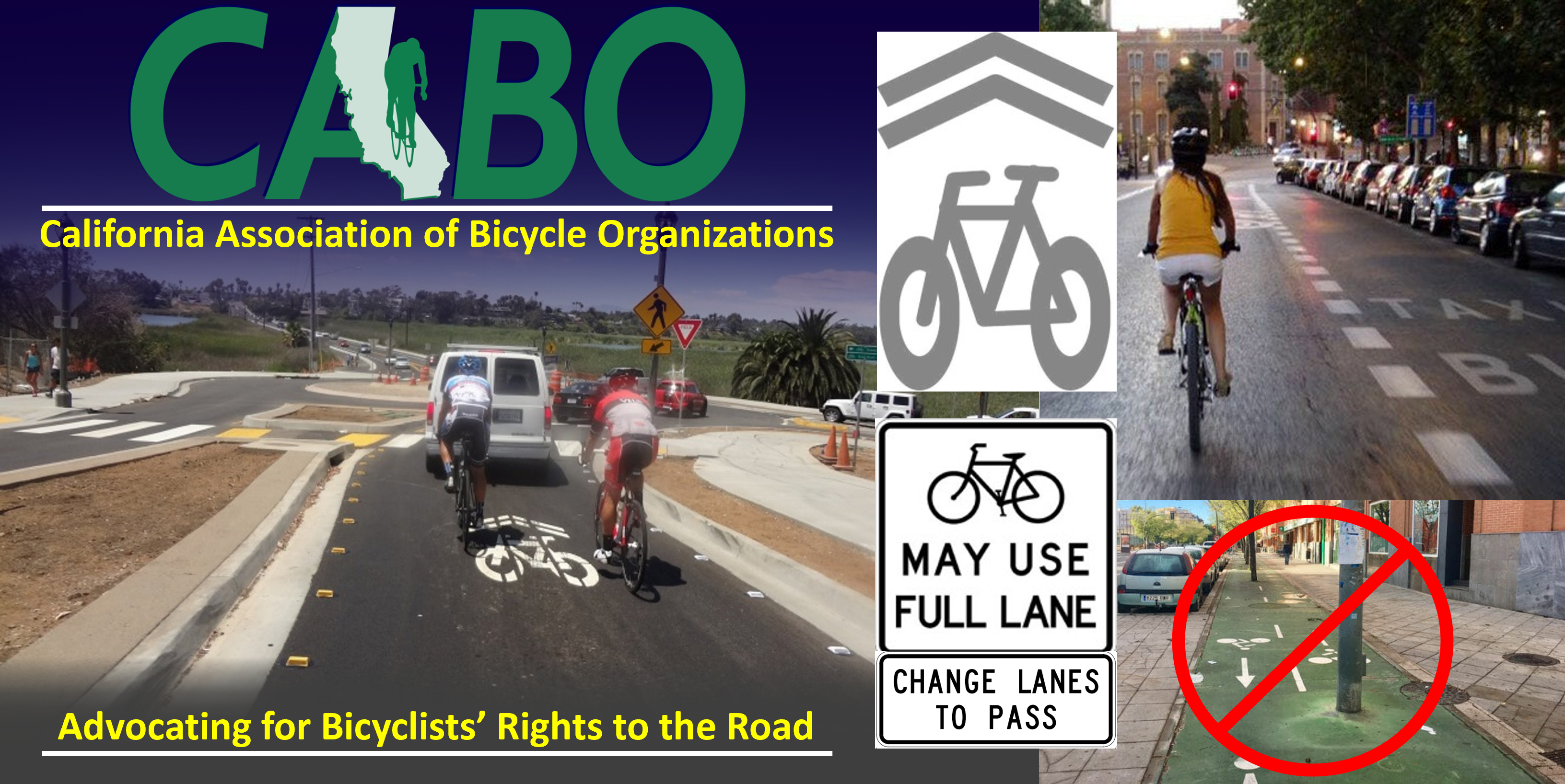In the next week or so, we’re going to be moving the URL for the blog. Unfortunately, that will change the URL for the RSS feed. So please update your RSS reader to go here so you don’t get dropped in the transition. Sorry to all for the inconvenience!
Author Archives: CABO
Come Visit Us at Facebook!
Comments on Irvine’s Bicycle Friendly Community Application
The City of Irvine recently applied for to the League of American Bicyclists (LAB) for Bicycle Friendly Community (BFC) status. This application came as a surprise to many club leaders and other cyclists we spoke with, who had no idea that Irvine was pursuing such an award. Continue reading
Columnist Disparages Bicycling at Night
This article was in the outdoor section of yesterday’s Orange County register. It’s an article describing how to be safe while running at night – but did the author really have to disparage bicycling at night? Here’s a video showing it can be done safely:
Letter to Towing Company
On Friday, October 31, at approximately 3:30 PM, I was bicycling northbound on [street name removed]. Approaching the railroad tracks, the bike lane disappears and the outside lane narrows to a width that is unsafe to share side by side with a motor vehicle. I checked for traffic to the rear and then merged to the center of the outside lane. This is a defensive bicycling maneuver (supported by traffic law) to discourage motorists from passing too close within a narrow lane. After my merge, I noticed in my mirror that one of your drivers was approaching from behind in the outside lane. He saw me, safely changed lanes well in advance, and left plenty of passing clearance. However, the driver honked his horn as he passed in apparent ignorance or disapproval of my right to use the road. Continue reading
Looking for Alleged CVC 21202 Violations
CABO was informed that a cyclist was cited for violating CVC 21202. He felt that he was unfairly cited, fought the citation in traffic court and lost. We can’t reveal specifics of the case because the cyclist is currently preparing an appeal.
The text of CVC 21202 is available here: http://www.dmv.ca.gov/pubs/vctop/d11/vc21202.htm. A discussion regarding the applicability of this law is here: http://www.cvcbike.org/club/bikelaw.htm
21202. (a) Any person operating a bicycle upon a roadway at a speed less than the normal speed of traffic moving in the same direction at that time shall ride as close as practicable to the right-hand curb or edge of the roadway except under any of the following situations:
(1) When overtaking and passing another bicycle or vehicle proceeding in the same direction.
(2) When preparing for a left turn at an intersection or into a private road or driveway.
(3) When reasonably necessary to avoid conditions (including, but not limited to, fixed or moving objects, vehicles, bicycles, pedestrians, animals, surface hazards, or substandard width lanes) that make it unsafe to continue along the right-hand curb or edge, subject to the provisions of Section 21656. For purposes of this section, a “substandard width lane” is a lane that is too narrow for a bicycle and a vehicle to travel safely side by side within the lane.
(4) When approaching a place where a right turn is authorized.
(b) Any person operating a bicycle upon a roadway of a highway, which highway carries traffic in one direction only and has two or more marked traffic lanes, may ride as near the left-hand curb or edge of that roadway as practicable.
If the cyclist’s appeal is successful, justification is needed in order to get the decision published. We need examples where other cyclists may have been unfairly cited – or even if stopped, delayed or harassed in any way by a law enforcement officer – for allegedly violating CVC 21202. Please post here and/or contact us at cabobike -at- cabobike -dot- org as appropriate.
Gore Separated Bike Lanes
A while back we gave a presentation to the California Bicycle Advisory Committee showing our concerns with gore separated bike lanes. An example of a gore separated bike lane is the photo of Pacific Coast Highway in Dana Point posted below.
The gist of the presentation was this:
- The California MUTCD prohibits raised barriers or raised pavement markers between travel lanes and bike lanes. This is to avoid trapping cyclists when they need to leave the bike lane to make left turns, to pass another cyclist, to avoid debris, or to avoid conflicts with turning traffic.
- It is illegal to cross a gore striped area two feet or wider. Therefore, the gore area has the same effect as a physical barrier between the travel lanes and bike lanes.
- It is CABO’s position that gore separated bike lanes violate the intent of the provision prohibiting barriers between travel lanes and bike lanes. However, for clarity, CABO requested that the appropriate wording be added to specifically prohibit gore separated bike lanes.
Bike/Bike Collision on Dana Point Path
Below are photos that were sent to us from a bike/bike crash on the sidepath adjacent to Coast Highway in Dana Point. At this time we have no idea how the riders involved are doing. We envisioned the possibility of a high speed bike/bike crash during our presentation to the city Traffic Subcommittee two years ago, the video clip from our presentation is at this link:
http://www.cyclistview.com/danapoint/slide15.htm




Dana Point Bike Lane Sign
http://www.cyclelicio.us/2008/08/dana-point-bike-lane.html

On that blog, the city Public Works director explained:
“Here’s the explanation. The sign belongs to the new median construction contractor who was warning vehicles of the median construction and lane narrowing further up ahead. Coincidentally, the City was also installing new bike lanes on PCH. The bike lane striping subcontractor striped the bike lanes at night and then moved the other contractor’s sign to the location you see it. (Not smart.) The City inspector then noticed the sign and had it moved.”
Actually, that’s quite a reasonable explanation. But then he continues:
“The good news is that the majority of PCH is now striped in Dana Point. The striping was done in concert with the California Association of Bicycling Organizations who reviewed the plans.”
To which CABO replied:
“Thanks to the Public Works director for being on top of the situation – and thanks to him for giving CABO a chance to review the plans, even though we agreed to disagree on some of the plans.”
CABO did indeed review the plans – but we weren’t in agreement with the city. Before they did the striping there was already a wide shoulder which was just fine. Now they’ve got a narrower bike lane by the gutter, which is going to fill up with debris in no time, and gore striping to the left which is technically illegal for cyclists to use or cross. A net loss for cyclists in this writer’s opinion. At least the city agreed to move the bike lane away from the edge of the road at intersections, in order to minimize turning/crossing conflicts.
State Route 241: The Case for Bicyclist Access
In recent years in Orange County, new travel corridors have been provided in the form of toll roads through locations where no other paved roads previously existed. These provide shortcuts for motorists, but currently bicyclists must take the long way around to get from Point “A” to Point “B” in many cases.
State Route 241 in Orange County, California, provides the only direct access between the new Portola Springs community in Irvine and the residential/commercial areas of Foothill Ranch. The direct route via SR241 is 1.6 miles and is prohibited to bicyclists, while the shortest legal alternate route for bicyclists is 8.4 miles. This four minute video, created by League of American Bicyclists Certified Instructor, Brian DeSousa, makes the case for allowing bicyclist access to this section of SR241.
The video is also available directly on YouTube here:
http://www.youtube.com/watch?v=-bDvmtzNDfA – for those who can’t access YouTube, the video is the second from the top in the following page: http://www.cyclistview.com/innertube/
